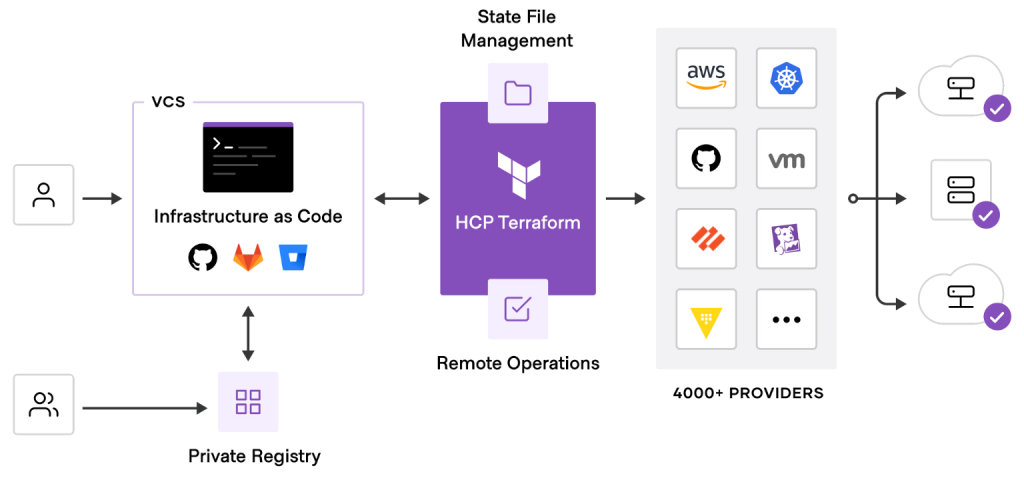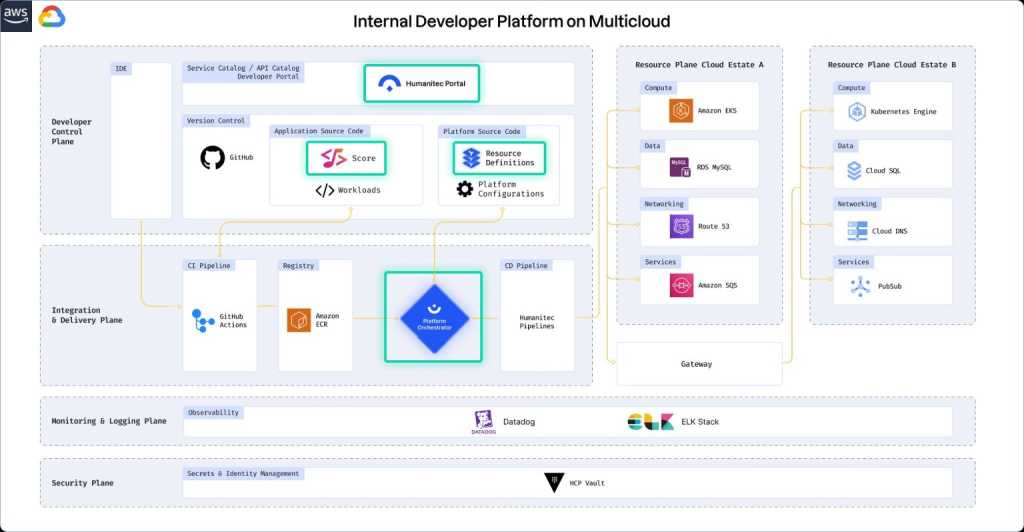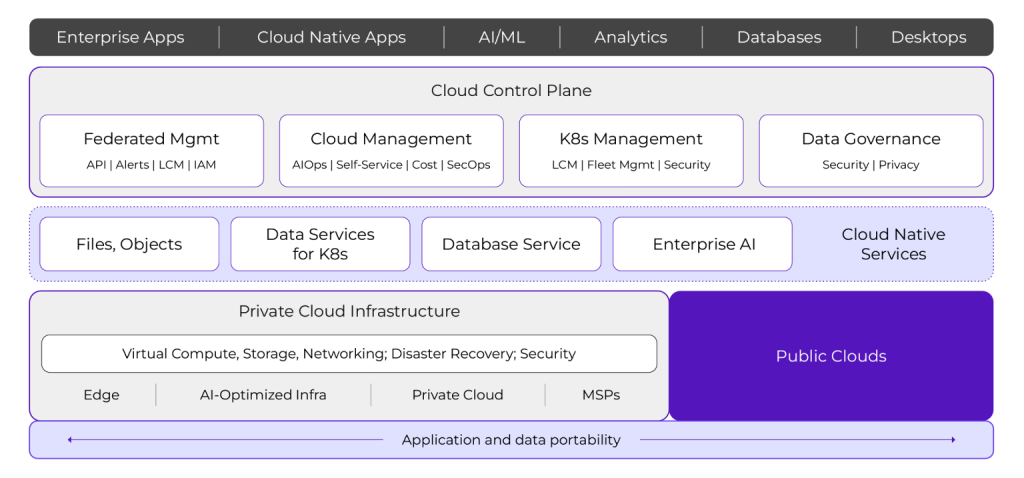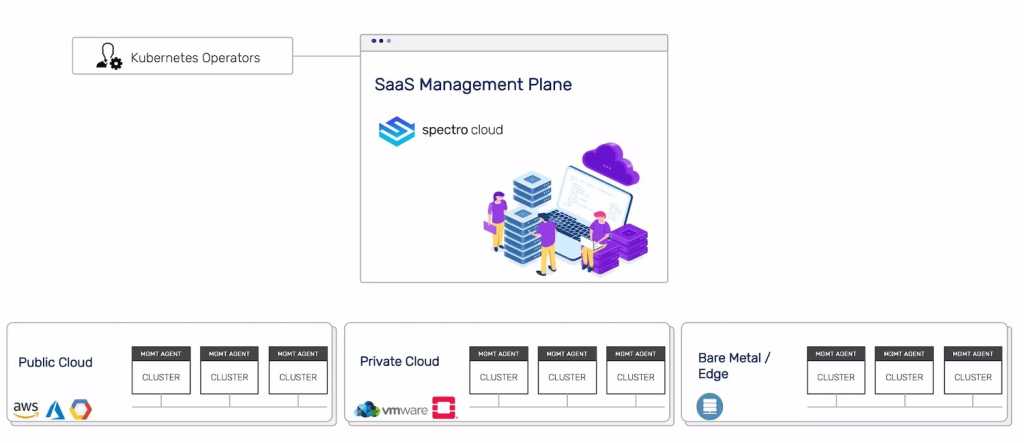Truly enterprise-grade multicloud management solutions are rare, but these come close. And their diverse approaches address a wide range of needs.

Multicloud is increasingly common in today’s enterprises. The use of multiple public clouds, even spreading applications across clouds, can help with compliance, boost availability, reduce risk, or avoid vendor lock-in. Companies also adopt multiple clouds to support best-of-breed strategies, or as the result of mergers or acquisitions.
Enterprises already use an average of 2.4 public cloud providers, according to Flexera’s 2025 State of the Cloud report. And multicloud adoption is anticipated to rise further, driven by new AI demands and the sovereign cloud movement. In addition to using multiple public clouds like Amazon Web Services (AWS), Microsoft Azure, or Google Cloud Platform (GCP), many enterprises today also rely on a mix of on-prem data centers, private clouds, bare-metal, and edge environments.
Multicloud management solutions help unify common functions across these environments, supporting deployment, configuration, governance, observability, monitoring, cost analysis, and more. No solution covers every area, though, which is why niche tools have emerged for deeper customization.
Below, we survey six top multicloud management systems for 2025. Some are cloud-provided, others cloud-agnostic. Some focus on infrastructure as code (IaC) or platform engineering, while others offer GUI-based control and enterprise bells and whistles. Some aim to provide all-purpose enterprise platforms, while others take a Kubernetes-first approach. Whatever your needs, the right fit is likely out there if you do some digging.
Google Cloud Anthos
Multicloud manager with hyperscaler muscle
Google Cloud Anthos is a full-featured managed platform that enables you to build and manage Kubernetes-based container applications in hybrid cloud and multicloud environments. Don’t let the name fool you—Anthos works with AWS, Azure, and GCP, as well as workloads on premises and at the edge.
Anthos provides a single control plane with declarative policies to ensure consistency across configuration management, service mesh, security, access policies, telemetry, and observability. You can group “fleets” to organize clusters and resources for multicloud administration.
At its core are open source projects like Kubernetes, Istio, Knative, and Tekton. Anthos can run anywhere and includes tooling to aid VM-to-container migration. It also provides a marketplace for third-party add-ons.
One hindrance—for fans of vanilla Kubernetes—could be its bias toward Google’s flavor of Kubernetes under the hood (Google Kubernetes Engine, or GKE). But that’s a small gripe, considering Google created Kubernetes and continues to lead its development.
If you’re looking for a strong option to deploy, observe, monitor, and govern workloads on-premises and across major clouds—with the same power as GCP—then Anthos should be on your short list.

Google Cloud
HCP Terraform
Terraform with enterprise bells and whistles
Terraform is a command-line tool and configuration language for infrastructure as code (IaC). Inherently multicloud, Terraform automates all kinds of provisioning and management tasks, covering everything from cloud server, storage, network, and database resources to deployment pipelines, serverless applications, Kubernetes clusters, and much more.
Built on top of Terraform, HashiCorp’s HCP Terraform offers a hosted platform to standardize and collaborate on IaC at scale. It abstracts configuration management with features like registries for modules and secrets, policy enforcement, state storage, and governance controls. A self-hosted option is also available.
Terraform itself is cloud-agnostic and supports AWS, Microsoft Azure, Google Cloud, Oracle Cloud, Alibaba Cloud, and more. It’s mature and widely adopted, having helped power the devops and container movements since 2014.
Once open source, Terraform is now licensed under HashiCorp’s Business Source License (BSL), prompting the creation of OpenTofu as a community-driven alternative—and the departure of some core maintainers. Another challenge is that writing and maintaining Terraform modules at scale can be complex, even with a managed platform.
That said, Terraform is the de facto cross-cloud IaC standard. If you don’t mind some lock-in, HCP Terraform offers granular control over cloud resources with SaaS-like usability.

HashiCorp
HPE Morpheus Enterprise
Hybrid multicloud with wide enterprise coverage
HPE Morpheus Enterprise is a hybrid multicloud management solution that stands out for its broad feature coverage and support for both visual and programmable infrastructure automation.
Morpheus supports AWS, Microsoft Azure, Google Cloud Platform, IBM Cloud, Oracle Cloud, Nutanix, KVM, Kubernetes, and other niche clouds and surrounding technologies. It enables self-service provisioning, backups, compliance checks, and more—accessible via API, command-line interface, or GUI.
As you might expect from HPE, Morpheus is more tuned to the governance side of the multicloud equation than others on this list, with cost analytics, policy enforcement, and automation all part of the mix. Morpheus offers deep visibility and strong role-based access controls, making it a good choice for regulated environments.
HPE Morpheus Enterprise provides a flexible way to build various platform stacks, and integrates with a wide range of enterprise-oriented tools and services. However, Morpheus is a bit opinionated and not as built on open source as other options.
Morpheus makes sense for enterprises seeking a flexible, all-in-one solution for managing a hybrid infrastructure spanning on-prem data centers, edge deployments, and multiple clouds.

HPE
Humanitec
Multicloud deployment shifts to the developer
As platform engineering gains traction, internal developer platforms (IDPs) are reframing multicloud management, abstracting devops complexity and enabling self-service workflows. Humanitec leads this space, offering a cloud-agnostic infrastructure management layer.
Rather than prescribing tools, Humanitec serves as a “platform for platforms,” letting you stitch together your stack. Developers define workloads using Score, a workload spec, while the Platform Orchestrator generates configurations and populates a visual UI for deployment and management.
Humanitec is purpose-built for optimizing the cloud-native deployment-feedback loop, and it can be configured to work across all major clouds. But, it isn’t focused on cost visibility or legacy VM orchestration like traditional multicloud suites, and it doesn’t replace observability or security tools.
If your platform team wants to build a flexible, developer-friendly layer for cross-cloud deployments and operations, Humanitec is a strong choice. That said, it’s not alone—alternatives include Port, Crossplane, and Backstage, each offering different flavors of the IDP approach.

Humanitec
Nutanix Cloud Platform
A single pane of glass for hybrid multicloud
Nutanix is a hybrid multicloud platform that is quite universal—it can be used to run, manage, and secure virtual machines and containers across public clouds, private data centers, and edge environments.
Nutanix Cloud Platform consolidates functionality typically spread across multiple tools into a single control plane. It offers cost analysis, Kubernetes management, data security, monitoring, self-healing, disaster recovery, and more.
Nutanix Cloud Platform is highly tuned for deploying and migrating enterprise apps and databases across environments. You choose your hardware, hypervisor, cloud provider, and Kubernetes platform, and the Nutanix platform stitches it all together. It also includes automation to optimize performance and detect security anomalies across clouds.
Nutanix Cloud Platform is GUI-first and opinionated, emphasizing “click ops” over code. This can be a plus for IT teams without established IaC workflows, but may turn off devops engineers looking for code-based, declarative control.
If you need broad feature coverage in a platform that supports on-prem and multicloud, and you prefer a managed experience over heavy scripting, Nutanix is a strong choice.

Nutanix
Palette
Kubernetes-first malleable multicloud operations
It didn’t take long for Kubernetes to become the cloud-agnostic container engine of choice in the enterprise. Palette, by Spectro Cloud, is a strong option for enterprises building on Kubernetes that require a multicloud management layer.
Palette provides a modular architecture for managing cluster operations across the stack, including deployment, security policies, networking, and monitoring. It supports all major clouds as well as bare metal, edge, and data center deployments, using a declarative model based on the Cloud Native Computing Foundation’s Cluster API (CAPI).
Spectro Cloud provides “packs,” a layered stack concept that supports a wide range of integrations for areas like authentication, ingress, edge Kubernetes, networking, security, service mesh, and more. This enables best-of-breed customization for specific needs.
While Spectro Cloud enforces configurations, policies, and life cycle constraints, deep governance and cost analysis are out of scope.
Palette is a great option for devops-heavy, Kubernetes-native organizations that span multiple clouds and need a malleable solution to unify operations and delivery across environments.

Spectro Cloud
Honorable mentions
There are a number of other platforms that get the broad multicloud sticker, because they work across clouds and have 80% of the expected features. SUSE Rancher and Cloudify are two other mature, all-in-one examples with proven industry use. Early-stage players aiming to orchestrate multicloud operations include Firefly, Fractal Cloud, and Emma.
Plenty of alternative Kubernetes platforms (like Platform9, Mirantis, and D2iQ) support public and private cloud deployments. For VMware-heavy organizations, VMware Cloud Foundation (VCF) from Broadcom offers a platform to manage VMware-based workloads across private and VMware-aligned public cloud environments.
And there are plenty of niche tools to fill the gaps. As we’ve seen, many multicloud management platforms focus on deployment and configuration, leaving out functions like cost analysis and policy enforcement. These specialized tools cover those gaps and others:
- Cost analysis and optimization: Flexera Cloud Management Platform, Cloudbolt, CloudHealth by VMware, CloudZero, Apptio Cloudability, OpenCost, and Kion
- Deployment and GitOps: ArgoCD, Spacelift, Harness, Red Hat Ansible, and Scalr
- Policy, governance, and security: Open Policy Agent (OPA), Fugue, Prisma Cloud, and Lacework
- Monitoring and observability: Datadog, New Relic, Grafana Cloud, and Dynatrace
A moving target
73% of organizations are using two or more clouds, according to a 2025 survey of 500 IT leaders by HostingAdvice.com. Yet, while multicloud is now commonplace, true multicloud management is more elusive. Each cloud has its own nuances, making a truly agnostic, fully-featured control plane for deploying and managing workloads a dream we’re still chasing.
Because the industry keeps swinging between monolithic “all-in-one” platforms and best-of-breed microservices for niche tasks, it’s hard to decipher where cloud management approaches will ultimately land. It’s also increasingly iffy to recommend open-source options as a sure thing, given ongoing license changes and ecosystem fragmentation.
Thankfully, the platforms discussed above can take you a good way toward multicloud usage, abstracting much of the complexity and offering unified control plane options for your estates. Of course, this comes with tradeoffs—namely, vendor lock-in and giving up some control over building your own platform. That’s one reason platform engineering has emerged as a key practice.
Looking ahead, cloud-agnostic layers to manage these experiences will remain essential—and they’ll continue to evolve with each new technology wave.
If you found this article helpful, please support our YouTube channel Life Stories For You


bouncingball88
Bouncingball88… that’s a catchy name! Wonder if the games are as fun as it sounds. Might just hop over to bouncingball88 and give it a shot. Who knows, could be my new lucky spot!
188betvvip
188betvvip, eh? 188bet is fairly famous, but is the vip version any better? I have to check, because I need the best stuff! Check it out: 188betvvip
jl9casino
Giving props to jl9casino for their great selection of games. Something for everyone, really. I especially enjoy the insert game type, if known, otherwise just leave as ‘specific games’. Great experience all around. jl9casino